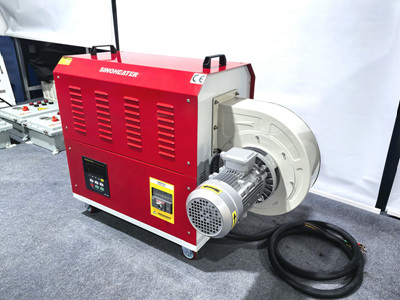Selecting a Heat Blower for Vibration-Prone Environments: Key Antivibration Considerations
When choosing a heat blower for industrial or mechanical settings where vibrations are inevitable, durability and stability become non-negotiable. Vibrations, whether from machinery, transportation, or structural movement, can compromise performance, reduce lifespan, and even pose safety risks. Below are critical factors to evaluate to ensure your heat blower operates reliably under such conditions.
1. Structural Robustness and Material Quality
The physical construction of the heat blower determines its ability to withstand constant motion. Opt for models built with reinforced materials like stainless steel or heavy-duty alloys, which resist warping or cracking under stress. Components such as housing, mounting brackets, and fan assemblies should be designed to absorb shocks without transferring excessive force to internal parts.
Additionally, inspect how the unit is assembled. Welded joints or bolted connections with vibration-dampening washers are preferable to snap-fit designs, which may loosen over time. A compact, balanced design minimizes weak points, ensuring the heat blower remains intact even in high-vibration zones.
2. Internal Component Isolation Mechanisms
Vibrations can disrupt sensitive internal parts, such as heating elements, motors, or thermostats. Look for heat blowers that incorporate isolation systems, such as rubber mounts or spring-loaded dampers, to decouple these components from the main frame. This prevents micro-movements from causing electrical shorts, misalignment, or premature wear.
For example, a motor with a flexible coupling or a heating coil suspended in silicone gel can absorb vibrations before they affect performance. Pay attention to whether the manufacturer specifies vibration-isolation features in technical documentation, as these details often indicate a focus on long-term reliability.
3. Fan and Airflow Design for Stability
The fan is a common source of vibration in heat blowers, especially if blades are unbalanced or motors operate at high RPMs. Choose models with dynamically balanced fans to minimize wobbling during rotation. Some advanced designs use counter-rotating blades or aerodynamic shaping to reduce turbulence, which not only cuts vibrations but also improves energy efficiency.
Another consideration is the airflow path. Straight, unobstructed ducts generate fewer vibrations compared to convoluted or narrow channels, which can create pressure fluctuations. Ensure the heat blower’s intake and exhaust grilles are reinforced to prevent rattling under airflow pressure changes.
4. Environmental Sealing and Corrosion Resistance
In vibration-prone areas, dust, debris, or moisture can infiltrate the heat blower if seals degrade. Look for units with IP-rated enclosures (e.g., IP54 or higher) that protect against particulates and liquids. Gaskets made from silicone or neoprene are more resilient than foam alternatives, maintaining their shape even when subjected to repeated movements.
Corrosion-resistant coatings on metal parts, such as epoxy or powder finishes, further extend the lifespan by preventing rust from weakening structural integrity. This is particularly important in humid or chemically exposed environments where vibrations might accelerate material degradation.
5. Certification Standards and Testing Protocols
Reputable manufacturers subject their heat blowers to rigorous testing to simulate vibration-heavy conditions. Check for certifications like MIL-STD-810G (military-grade shock and vibration resistance) or ISO 16750 (automotive standards for electrical components). These benchmarks indicate that the unit has been validated to perform consistently despite physical stress.
Third-party testing reports or compliance statements can provide transparency about how the heat blower handles specific vibration frequencies and amplitudes. Prioritize products with documented results, as they offer assurance of real-world durability.
By prioritizing these aspects, you can select a heat blower engineered to thrive in environments where constant motion is unavoidable. From material selection to internal isolation, every detail contributes to a stable, long-lasting solution.



